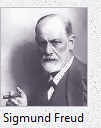http://www.pbs.org/wgbh/pages/frontline/shows/dna/photos/eye/text_06.html
I found this article by Dr. Elizabeth Loftus and Katherine Ketcham in their book "Witness For the Defense: The Accused, the Eyewitness, and the Expert Who Puts Memory On Trial." It discusses everything we have been talking about in class the last 2 weeks: memory as evidence, witness misidentification, and wrongful conviction. It's kind of long, but it covers a lot of information, and provides cases and examples of the different topics discussed. The authors discuss how memory works, and how studies have shown that people have a hard time identifying objects they would see on a regular basis, such as: pennies, the letters that correspond to the numbers on a telephone, etc.
They also discuss how people can create memories from stories/information they are told.
"...Child psychologist Jean Piaget, in his Plays, Dreams, and Imitation in Childhood, related a personal story about the malleability of memory:
'...one of my first memories would date, if it were true, from my second year. I can still see, most clearly, the following scene, in which I believed until I was about fifteen. I was sitting in my pram, which my nurse was pushing in the Champs Elysees, when a men tried to kidnap me. I was held in by the strap fastened around me while my nurse bravely tried to stand between me and the thief. She received various scratches, and I can still see vaguely those on her face. Then a crowd gathered, a policeman with a short cloak and a white baton came up, and the man took to his heels. I can still see the whole scene, and can even place it near the tube station. When I was about fifteen, my parents received a letter from my former nurse saying that she had been converted to the Salvation Army. She wanted to confess her past faults, and in particular to return the watch she had been given as a reward on occasion. She had made up the whole story, faking the scratches. I, therefore, must have heard, as a child, the account of this story, which my parents believed, and projected into the past in the form of a visual memory.'..."
Another topic they discuss is what psychologists refer to as "event factors," defined as 'those factors inherent within a specific event that can alter perception and distort memory.' The case used as an example of this follows.
"Two men in their mid-twenties were hunting for bears in a rural area of Montana. They had been out all day and were exhausted, hungry, and ready to go home. Walking along a dirt trail in the middle of the woods, with the night falling fast, they were talking about bears and thinking about bears. They rounded a bend in the trail and approximately twenty-five yards ahead of them, just off the trail in the woods, was a large object that was moving and making noise. Both men thought it was a bear, and they lifted their rifles and fired. But the "bear" turned out to be a yellow tent, with a man and a woman making love inside. One of the bullets hit the woman and killed her. When the case was tried before a jury, the jurors had difficulty understanding the perceptual problems inherent in the event; they simply couldn't imagine how someone would look at a yellow tent and see a growling bear. The young man whose bullet killed the woman was convicted of negligent homicide. Two years later he committed suicide."
The two hunters were in the woods all day, looking for bears, thinking about bears, wanting to see a bear. In the low light, they saw a large object moving and heard noises, they assumed it was a bear, and shot.
Loftus and Ketcham also discuss witness misidentification and wrongful conviction. They use the case of Jimmy Landano, an ex-convict who spent time in prison, who was wrongfully convicted by four eyewitnesses and three accomplices as the man that killed a police officer in 1976. Despite overwhelming evidence and an alibi proving his innocence, he is still in prison writing letters to lawyers and other wrongfully convicted people trying to prove his innocence.



 (from abcnews.com)
(from abcnews.com) 
 On November 1st, 2007 Meredith Kercher was found dead on the bedroom floor partly naked with stab wounds on her neck, many bruises, and signs of being sexually assaulted. At the time, Meredith was a foreign exchange student in Perugia, Italy along with Amanda Knox, an American foreign exchange student. Five days after interrogation, Amanda Knox and her boyfriend Raffaele Sollecito were arrested and later convicted with murder, sexual violence, as well as other charges (Knox was sentenced to 26 years while Sollecito was sentenced for 25 years). DNA and fingerprint evidence at the scene both inside and around Meredith's body pointed to another man, Rudy Hermann Guede. Guede was later arrested, tried, and was also convicted of murder an sexual assault. Guede was initially sentenced to 30 years in prison but appealed his sentence which was then reduced to 16 years.
On November 1st, 2007 Meredith Kercher was found dead on the bedroom floor partly naked with stab wounds on her neck, many bruises, and signs of being sexually assaulted. At the time, Meredith was a foreign exchange student in Perugia, Italy along with Amanda Knox, an American foreign exchange student. Five days after interrogation, Amanda Knox and her boyfriend Raffaele Sollecito were arrested and later convicted with murder, sexual violence, as well as other charges (Knox was sentenced to 26 years while Sollecito was sentenced for 25 years). DNA and fingerprint evidence at the scene both inside and around Meredith's body pointed to another man, Rudy Hermann Guede. Guede was later arrested, tried, and was also convicted of murder an sexual assault. Guede was initially sentenced to 30 years in prison but appealed his sentence which was then reduced to 16 years. 












.jpg)


Recent Comments